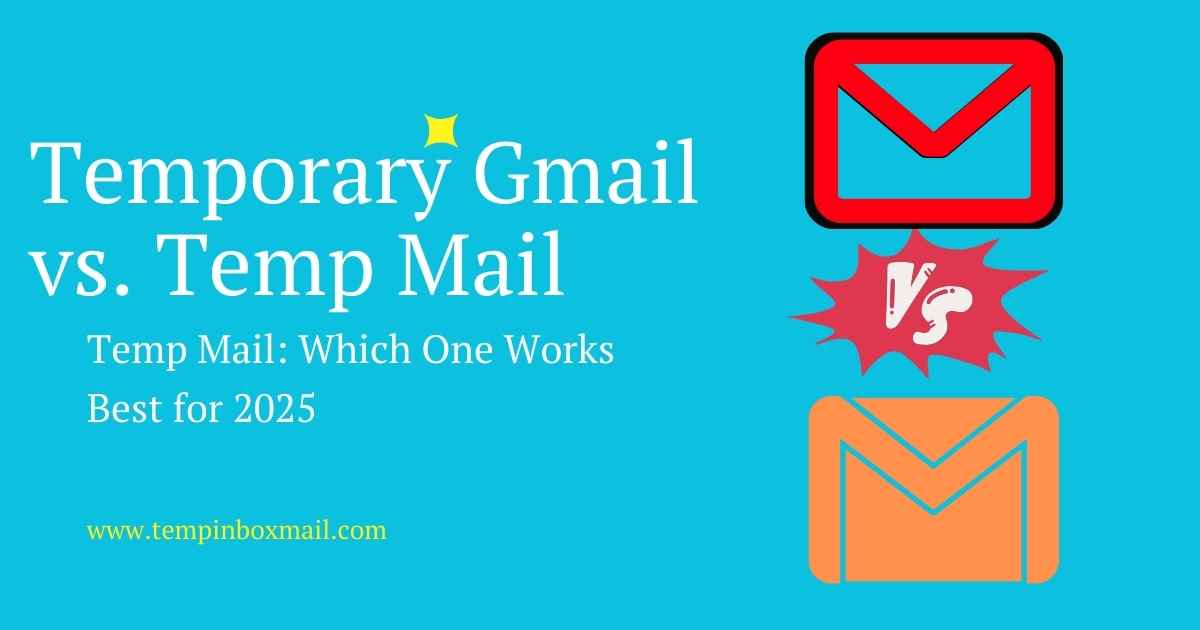Temporary Gmail vs. Temp Mail: Which One Works Best for 2025?

As we approach 2025, the battle between temporary Gmail solutions and traditional temp mail services has intensified. With growing privacy concerns and sophisticated spam filters, choosing the right disposable email option requires careful consideration of your specific needs.
This comprehensive guide will compare all aspects of these two approaches, analyzing their strengths, weaknesses, and ideal use cases for 2025 and beyond.
Understanding the Key Differences
| Feature | Temporary Gmail | Traditional Temp Mail |
|---|---|---|
| Domain Reputation | High (@gmail.com rarely blocked) | Often blocked by major services |
| Account Longevity | Permanent (unless deleted) | Temporary (minutes to days) |
| Setup Complexity | Moderate (aliases or new accounts) | Instant (no registration) |
| Reply Capability | Full email functionality | Receive-only in most cases |
| Privacy Protection | Links to your Google account | Completely anonymous |
| Attachment Support | Full Gmail attachment features | Limited (usually 5-10MB) |
Temporary Gmail Solutions for 2025
1. Gmail Plus Addressing (yourname+tag@gmail.com)
The classic method that still works in 2025, though with increasing limitations.
Advantages
- No additional setup required
- All mail comes to your primary inbox
- Easy to filter (e.g., yourname+facebook@gmail.com)
Limitations
- Many services now block plus signs in emails
- Doesn't hide your real email address
- No true disposable functionality
2. Google Workspace Aliases (For Businesses)
Paid Google Workspace accounts allow creating and deleting aliases.
Advantages
- Professional appearance with custom domain
- True disposable functionality (can delete aliases)
- Full email capabilities for each alias
Limitations
- Requires paid Google Workspace subscription
- Needs domain registration and setup
- Admin access required for management
Traditional Temp Mail Services in 2025
1. Instant Temporary Inboxes (e.g., TempMailPro)
Web-based services that generate disposable email addresses instantly.
Advantages
- Completely anonymous - no registration
- True temporary functionality (auto-expires)
- No link to your real identity
Limitations
- Often blocked by major platforms
- Limited functionality (usually receive-only)
- Shorter inbox lifespan (typically 1-24 hours)
2. Forwarding Services (e.g., SimpleLogin, AnonAddy)
Services that create aliases forwarding to your real email.
Advantages
- More permanent than traditional temp mail
- Can reply from aliases
- Better domain reputation than free temp mail
Limitations
- Requires trusting a third-party service
- Free plans often have restrictions
- Still not as universally accepted as Gmail
Which Solution is Best for Your Needs?
When Temporary Gmail is Better:
When Traditional Temp Mail is Better:
Future Outlook: 2025 and Beyond
Based on current trends, we anticipate these developments:
- Google may introduce official temporary alias features to compete with Apple's Hide My Email
- Temp mail services will continue evolving better domain rotation to avoid blocks
- AI detection systems will improve at identifying both temporary Gmail and temp mail accounts
- Regulatory changes may impact the legality of certain disposable email uses
Frequently Asked Questions
Can websites detect temporary Gmail addresses?
Some sophisticated platforms can detect plus addressing, but standard Gmail aliases are indistinguishable from regular accounts.
Is temp mail being completely blocked in 2025?
While more services are blocking known temp mail domains, new providers constantly emerge with fresh domains.
Which option is more secure?
Traditional temp mail offers better anonymity, but temporary Gmail provides better account security if properly managed.
Can I use both solutions together?
Absolutely! Many privacy-conscious users combine approaches based on specific needs. For example, use temp mail for initial signup, then switch to a Gmail alias for ongoing communications.
Final Recommendations for 2025
After extensive testing, our recommendations are:
- For most users: Use Gmail plus addressing or aliases where accepted
- For maximum privacy: Choose reputable temp mail services like TempMailPro
- For business use: Consider Google Workspace with alias management
- For developers: Use temp mail APIs for testing environments